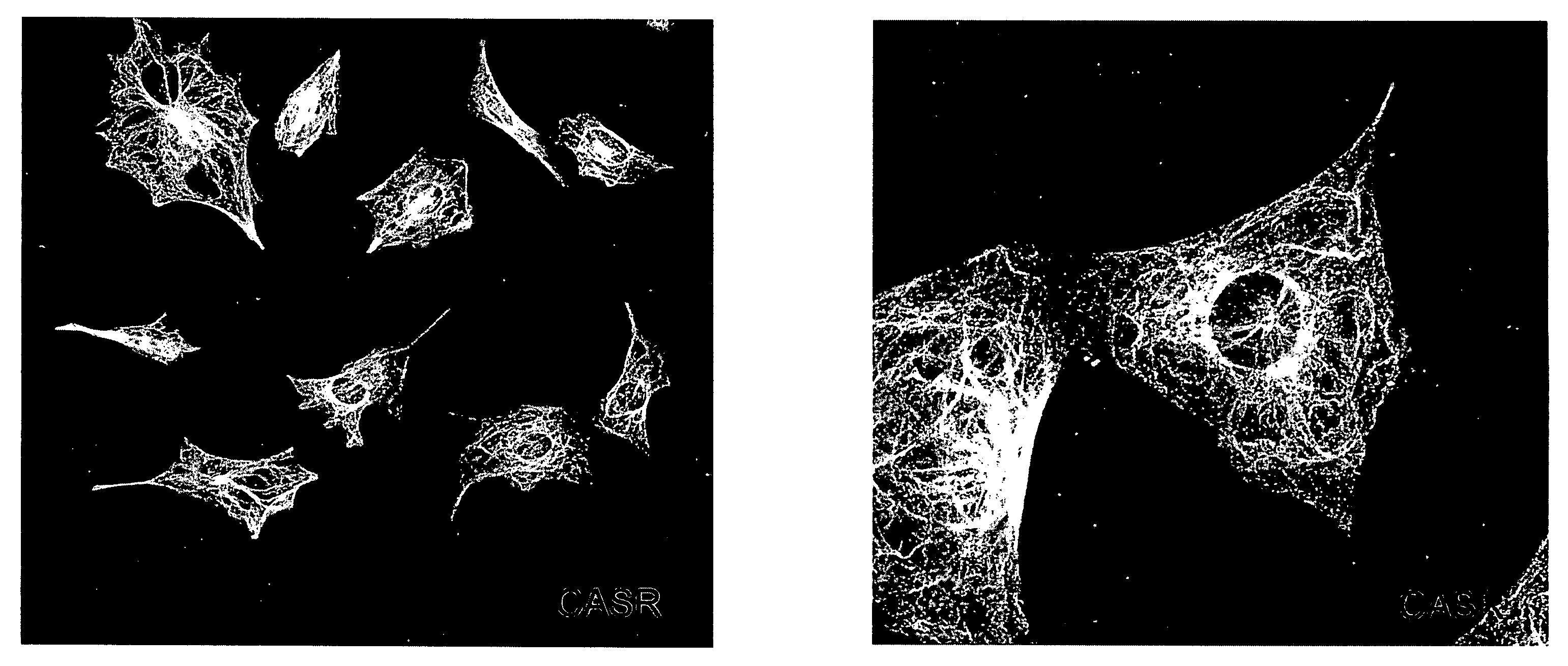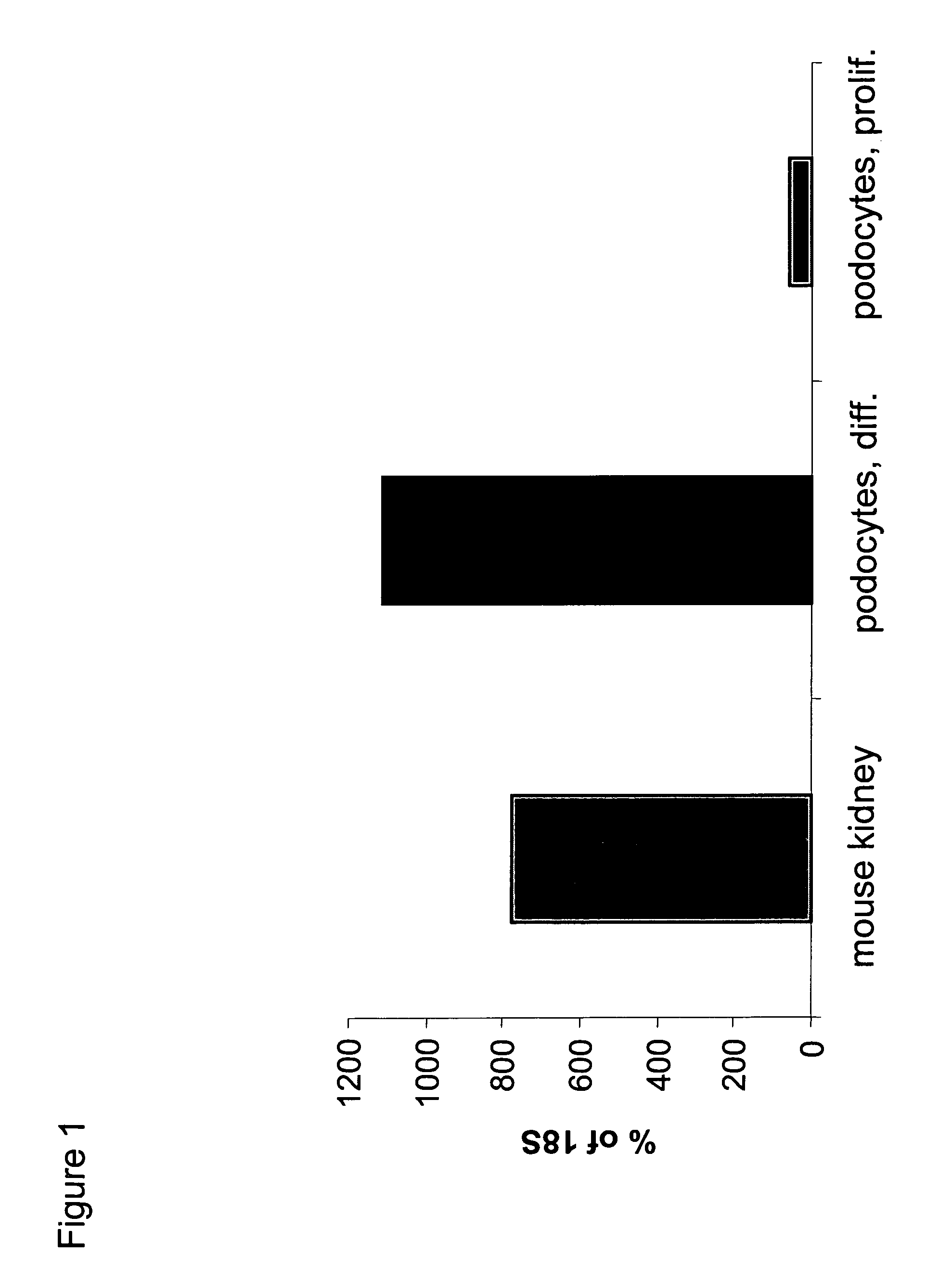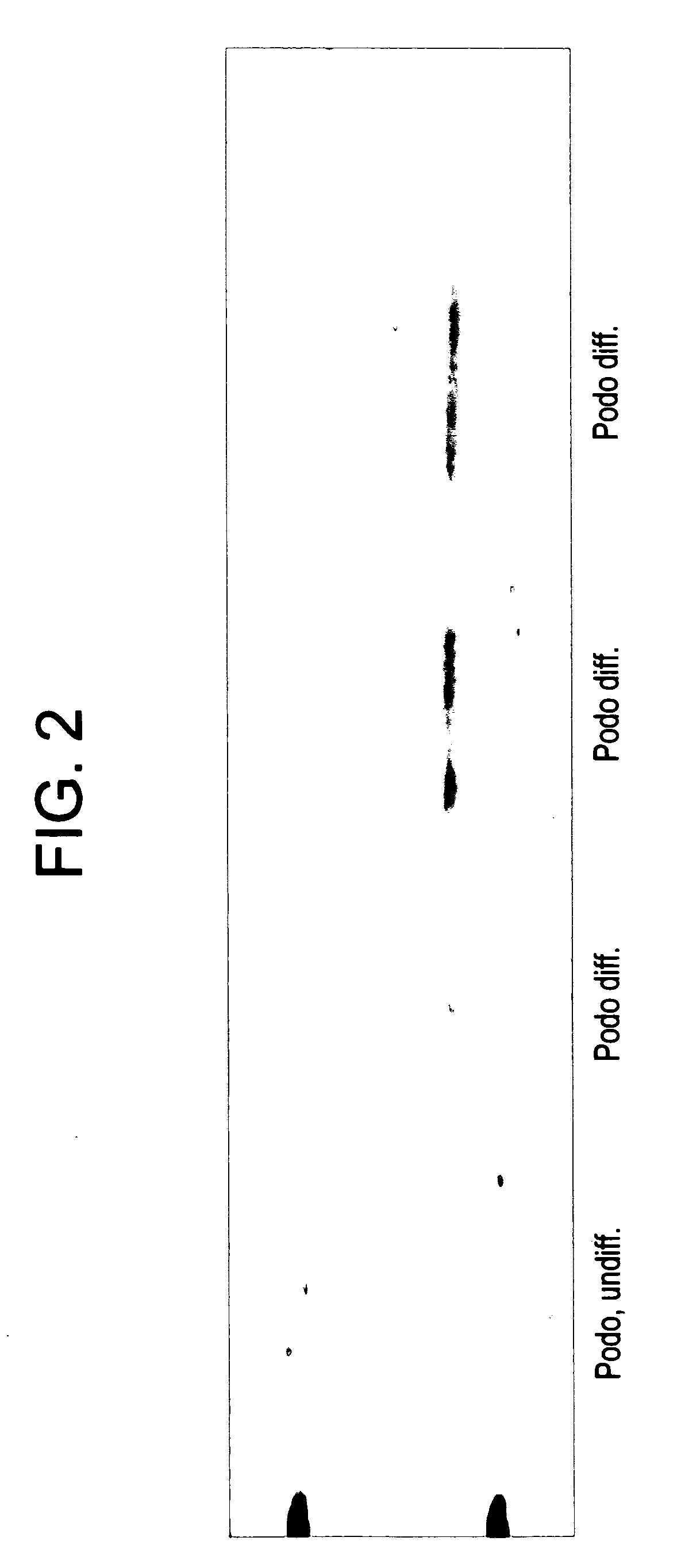Methods for treating podocyte-related disorders
a podocyte and disease technology, applied in the field of medicine, can solve the problems of retraction of the foot process and proteinuria, physiological and molecular mechanisms of glomerular filtration and its disturbance, and the protective effect of limited,
- Summary
- Abstract
- Description
- Claims
- Application Information
AI Technical Summary
Benefits of technology
Problems solved by technology
Method used
Image
Examples
example 1
[0121]This Example outlines methods used in the present invention.
[0122]Cell Culture
[0123]A well established cell model of conditionally immortalized murine podocytes was used to determine the impact of calcimimetics on podocyte function. These immortalized podocyte cell lines were generated from the Inmortomouse® (Charles River, Wilmington, Mass., USA) carrying a temperature-sensitive T-antigen as transgene, under the control of an interferon-γ inducible promoter. They were maintained cultured as previously described (Weins A et al. (2001) J Cell Biol 155: 393-404; Asanuma K. et al. (2005). J Clin Invest 115: 1188-1198. In brief, the cell line was maintained in RPMI 1640 (PAA Laboratories, Pasching, Austria) supplemented with 10% fetal bovine serum (PAA Laboratories, Pasching, Austria), 100 U / ml penicillin / streptomycin (Biochrom AG, Berlin, Germany) in humidified incubators with air-5% CO2. In order to induce differentiation, podocytes were grown on collagen type I (BD Bioscience, ...
example 2
[0143]This Example demonstrates that the calcium sensor receptor is expressed in podocytes. FIGS. 1 and 2 illustrate the results of quantitative real-time PCR (rt-PCR) and Western immunoblotting, correspondingly. The conditionally immortalized murine podocytes expresses the CaSR-protein in the differentiated, but not in the undifferentiated, proliferating state. Additional immunohistochemical stainings were performed to identify CaSR in mouse podocytes (see FIGS. 1 and 2). FIG. 3 illustrates the results of Immunofluorescence staining and demonstrates that the CaSR is mainly expressed along cell-membranes, but also at cytoplasmatic filaments and around the nuclei and vesicular trafficking of the CaSR from the nucleus to the membrane.
example 3
[0144]This Example demonstrates that the calcium sensor receptor is not found in the caveolin-1 enriched fraction. FIG. 4 illustrates the results of the Sucrose-gradient assay and demonstrates that CaSR proteins were restricted to caveolin-poor membrane fractions, suggesting that there is no direct local interaction of both proteins.
PUM
| Property | Measurement | Unit |
|---|---|---|
| density | aaaaa | aaaaa |
| emission wavelengths | aaaaa | aaaaa |
| emission wavelengths | aaaaa | aaaaa |
Abstract
Description
Claims
Application Information
 Login to View More
Login to View More - R&D
- Intellectual Property
- Life Sciences
- Materials
- Tech Scout
- Unparalleled Data Quality
- Higher Quality Content
- 60% Fewer Hallucinations
Browse by: Latest US Patents, China's latest patents, Technical Efficacy Thesaurus, Application Domain, Technology Topic, Popular Technical Reports.
© 2025 PatSnap. All rights reserved.Legal|Privacy policy|Modern Slavery Act Transparency Statement|Sitemap|About US| Contact US: help@patsnap.com



